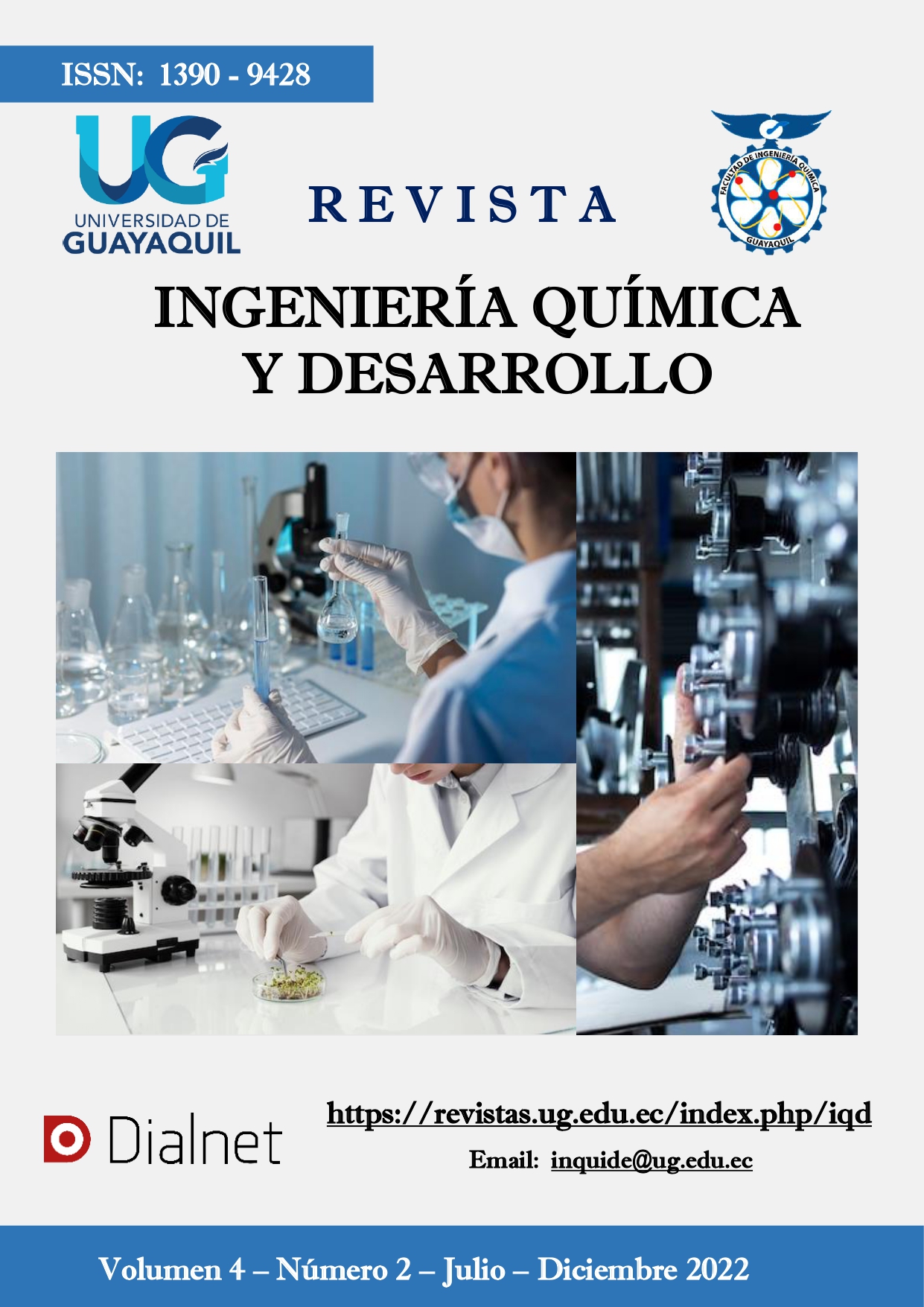Effect of texture improvers on the organoleptic characteristics of a vegan product type of thick pasta sausage
Main Article Content
Abstract
The growing vegan population in the world makes it necessary to develop better food products. The objective of this research is to produce a vegan thick pasta sausage product with acceptable organoleptic properties and high protein content. For this, vegan sausage formulas were prepared where the meat of animal origin was completely replaced with textured soy protein, using potato starch, carboxymethylcellulose (CMC) and wheat gluten as texture improvers; additionally, ingredients such as spices, vegetable, glutamate, nutritional yeast, etc. were used. For its evaluation, descriptive and hedonic sensory analysis was applied, the maximum shear force was determined using a texturometer and the protein content was quantified by proximal analysis. It was determined that the ideal proportion of additives is 20% wheat gluten, 0-3% potato starch and 0-0.3% CMC, since in this way the highest organoleptic acceptance values were obtained, without differing too much from an existing sausage type vegan commercial product as control sample. In addition, it was possible to improve the texture to values of 911.50 + 93.00g (F1) and 861.89 + 66.17g (F4), superior to other developments of vegan sausages from bibliography. Finally, it was determined that the protein content of the two formulas developed (F1 21.99%, F4 19.57%) is higher than that of a commercial vegan product (16%) and that of the original Manabí sausage (16%). In conclusion, the elaboration of a vegan product type sausage of thick pasta is feasible maximizing its organoleptic properties thanks to the use of the three texture improvers, especially wheat gluten.
Article Details
References
U. Saari, C. Herstatt, R. Tiwari, O. Dedehayir y S. J. Mäkinen, «The vegan trend and the microfoundations of institutional change: A commentary on food producers’ sustainable innovation journeys in Europe,» Trends in food science & technology, vol. 107, pp. 161-167, 2021.
T. Zhang, W. Dou, X. Zhang, Y. Zhao, Y. Zhang, L. Jiang y X. Sui, «The development history and recent updates on soy protein-based meat alternatives,» Trends in Food Science & Technology, 2021.
I. Ismail, Y. Hwang y S. Joo, «Meat analog as future food: a review,» Journal of animal science and technology, vol. 62, nº 2, p. 111, 2020.
S. Pickett, «Veganism, Moral Motivation and False Consciousness,» Journal of Agricultural and Environmental Ethics, vol. 34, nº 3, pp. 1-21, 2021.
G. DaSilva, J. Hecquet y K. King, «Exploring veganism through serious leisure and liquid modernity,» Annals of Leisure Research, vol. 23, nº 5, pp. 627-644, 2020.
M. Riaz, Soy Applications in Food, Boca Raton, Florida: CRC Press, 2006, pp. 1-21.
O. Malav, S. Talukder, P. Gokulakrishnan y S. Chand, «Meat analog: A review,» Critical reviews in food science and nutrition, vol. 55, nº 9, pp. 1241-1245, 2015.
J. Chiang, S. Loveday, A. Hardacre y M. Parker, «Effects of soy protein to wheat gluten ratio on the physicochemical properties of extruded meat analogues,» Food Structure, vol. 19, pp. 100-102, 2019.
M. Han y H. Bertram, «Designing healthier comminuted meat products: Effect of dietary fibers on water distribution and texture of a fat-reduced meat model system,» Meat Science, vol. 133, pp. 159-165, 2017.
C. Souza, E. Bellucci, J. Lorenzo y A. Barretto, «Low-fat Brazilian cooked sausage-Paio–with added oat fiber and inulin as a fat substitute: effect on the technological properties and sensory acceptance,» Food Science and Technology, vol. 39, pp. 295-303, 2019.
J. Lenis, F. Calle, G. Jaramillo, J. Perez, H. Ceballos y J. Cock, «Leaf retention and cassava productivity,» Field Crops Research, vol. 95, nº 2-3, pp. 126-134, 2006.
J. López-Alt, «How do they make plant-based meat behave like beef,» New York Times, 3 Marzo 2020.
M. Sadler, «Meat alternatives – market developments and health benefits,» Trends Food Sci Tech, vol. 15, pp. 250-260, 2004.
H. McIlveen y A. Abraham, «Meat avoidance and the role of replacers,» Nutr Food Sci, vol. 1, p. 29–36, 1999.
K. Kim, B. Choi, I. Lee, H. Lee, S. Kwon, K. Oh y Y. Kim, «Bioproduction of mushroom mycelium of Agaricus bisporus by commercial submerged fermentation for the production of meat analogue,» J Sci Food Agric, vol. 91, p. 1561–1568, 2011.
P. Singh, R. Kumar, S. Sabapathy y A. Bawa, «Functional and edible uses of soy protein products,» CRFSFS, vol. 7, p. 14–28, 2008.
P. Kumar, M. Chatli, N. Mehta, P. Singh, O. Malav y A. Verma, «Meat analogues: Health promising sustainable meat substitutes,» Critical reviews in food science and nutrition, vol. 57, nº 5, pp. 923-932, 2017.
Chaijan, Manat y W. Panpipat., «Pre-Neutralized Crude Palm Oil as Natural Colorant and Bioactive Ingredient in Fish Sausage Prepared from Tilapia (Oreochromis Niloticus),» Lwt, vol. 135, p. 110289, 2021.
